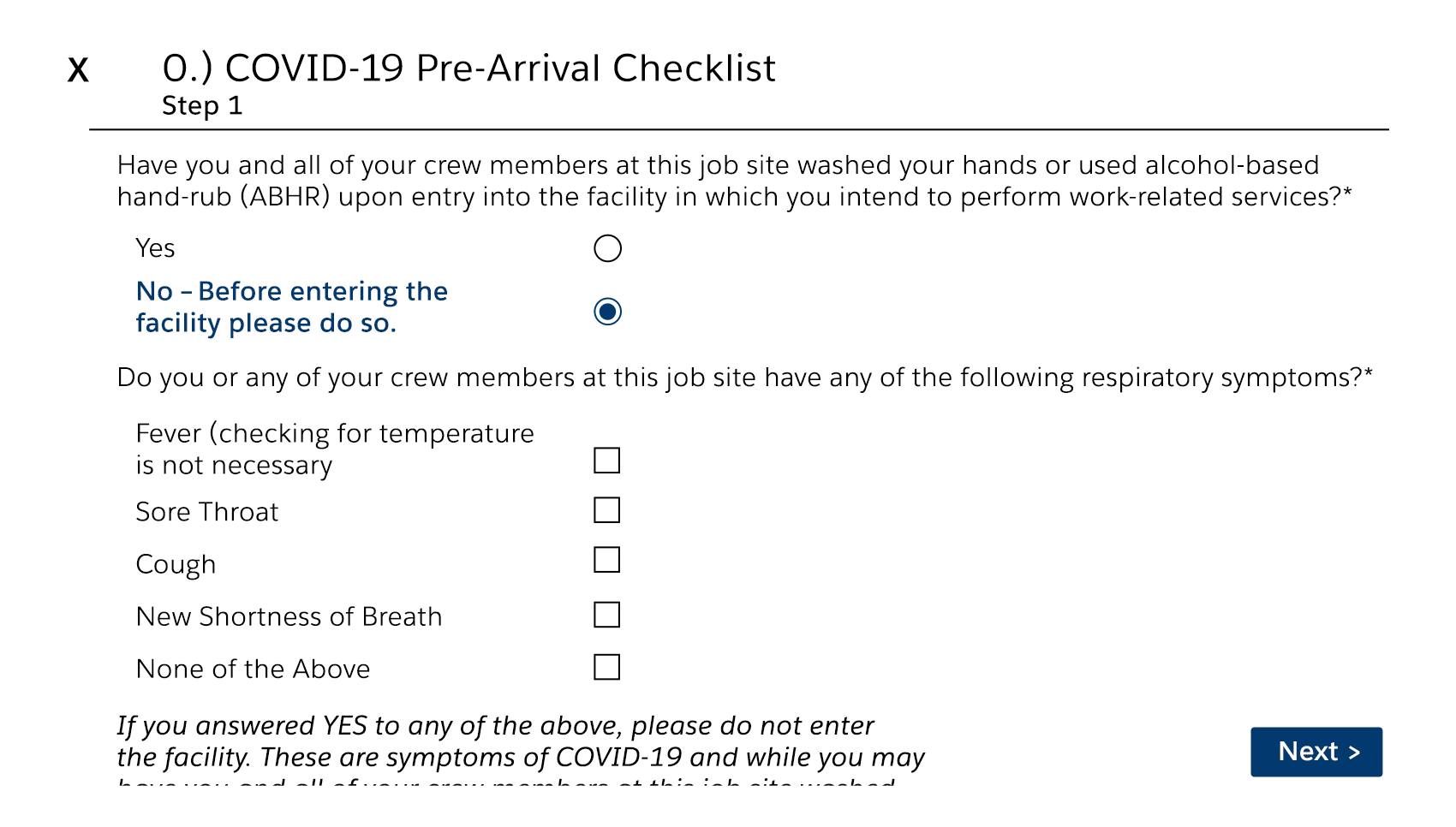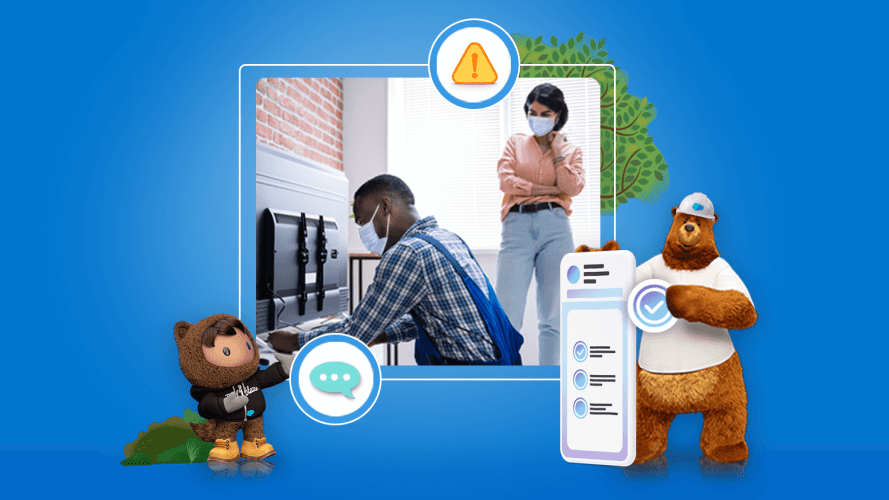In field service, ensuring both customer and employee safety isn’t easy. Field service workers are exposed to many hazards — electrical equipment, heavy machinery, power tools, ladders, and weather. They also work in isolation and in remote locations. And today, field service mobile workers face the risk of COVID-19.
Field service businesses already have processes in place to keep their mobile workers safe. But now, they also need to manage new government mandates, industry regulations, and added safety requirements, such as health questionnaires, social distancing, and workspace disinfection for COVID-19.
In addition, field service organizations are working through backlogged jobs that were put on hold at the beginning of the pandemic. At the same time, they’re also getting new service requests. In fact, our research shows field service is now being used 20% more than pre-COVID.
As a result, first-time fix rates are even more important to mobile worker safety. Along with best practices for preparation, efficiency, and communication, field service management keeps your mobile workers safe. Here’s how:
Elevate field service worker safety
Snap Install, a provider of turnkey installations, keeps their mobile workers safe during COVID-19. Snap’s team of contractors both installs and services digital signage, healthcare equipment, and ergonomic furniture throughout the United States and Canada. Greg Peckham, head of technology at Snap and a Salesforce Service Insider Elite Community member, shared how they use current guidance from the Centers for Disease Control and Prevention (CDC) with their field service mobile app to keep their teams safe on the job.
Ensure your mobile workers are healthy
Preparation is key to ensure a perfect field service experience. In addition to making sure your mobile workers have all of the necessary tools and resources in place to complete a job, they now have to follow new safety guidelines for COVID-19. These measures include health checks, workspace disinfection, masks, social distancing, and more.
In March, Snap developed a COVID-19 Pre-Arrival Checklist with screening questions based on CDC guidelines for all their technicians. They integrated the checklist into their Salesforce Field Service mobile app.

“We were able to do it quickly with the tools we had, which really helped us dynamically adapt at the beginning of COVID-19,” Peckham said. “It’s also nice that we can easily put in little tweaks and add steps when we need to in the process.”
Snap has also updated their existing safety guidelines to include COVID-19. To reinforce the importance of preparation, the first step is to complete the COVID-19 Pre-Arrival Checklist.
Peckham emphasized: “Concern over personal safety is first and foremost. The COVID-19 Pre-Arrival Checklist helps to build trust with our technicians and reassures them that we are committed to their health and safety. It also gives peace of mind to our clients that we’re taking more steps to keep their customers safe.”
Give mobile workers the right information to quickly complete the job
Before COVID-19, 45% of mobile workers spent unnecessary time on the job due to inaccurate or outdated information. Adding time to a job increases the risk of exposure to COVID-19 and delays technicians from addressing backlogged and new requests, especially if they can’t complete the job on the first visit.
Now, as soon as Snap assigns a team to a job, their field service mobile app provides access to the COVID-19 Pre-Arrival Checklist and current safety guidelines. Snap’s mobile app also makes sure technicians have complete job information, including driving directions, customer instructions, and check-in and checkout procedures. The technicians have the information they need in one place — boosting efficiency and building trust with their customers.
Another way Snap streamlines efficiency on the job is with their updated touchless signature policy. If a customer doesn’t want to complete the signature portion of their service ticket, the technician will note “Waived — COVID-19” on the service request.
Peckham noted: “We’re addressing our backlogged jobs — and it still takes two people the same amount of time to hang a 90-inch screen. Making sure our technicians have the information they need in advance always helps jobs to run smoother. Changes like our touchless signature policy decreases the spread of germs across physical devices.”
Communicate quickly, clearly, and consistently
Communication is critical to keep mobile workers safe. Speed, clarity, and consistency is important in every interaction.
Snap’s project managers are notified in real time with answers once a contractor completes the COVID-19 Pre-Arrival Checklist. This allows Snap to quickly and easily recognize exposure risks at a glance and take proactive measures to protect mobile workers and deliver on promised service.
For example, if a technician indicates they’ve been exposed to COVID-19, Snap will reach out to them for more details. “The mobile app makes it easy for our technicians to flag symptoms in the checklist and lets us know right away what’s going on with them, so we can offer support where we can and find another solution for service delivery,” Peckham said.
He added: “Standardizing the COVID-19 pre screening process in the mobile app also helps ensure consistent communication, no matter the industry. Technicians answer the same questions, whether they’re installing 30 high-definition screens in a hospital or an office.”
Keep mobile workers safe during COVID-19 and beyond
Field service workers deal with many hazards on the job, as well as a growing workload in the new normal. And due to COVID-19, field service workers are now faced with even more challenges to their safety. Set your team up for safe and successful service delivery with best practices and field service management, no matter what the job, where they are, or what’s happening in the world.
Learn how Salesforce Field Service helps keep your mobile workers safe on the job, wherever or whenever.




























